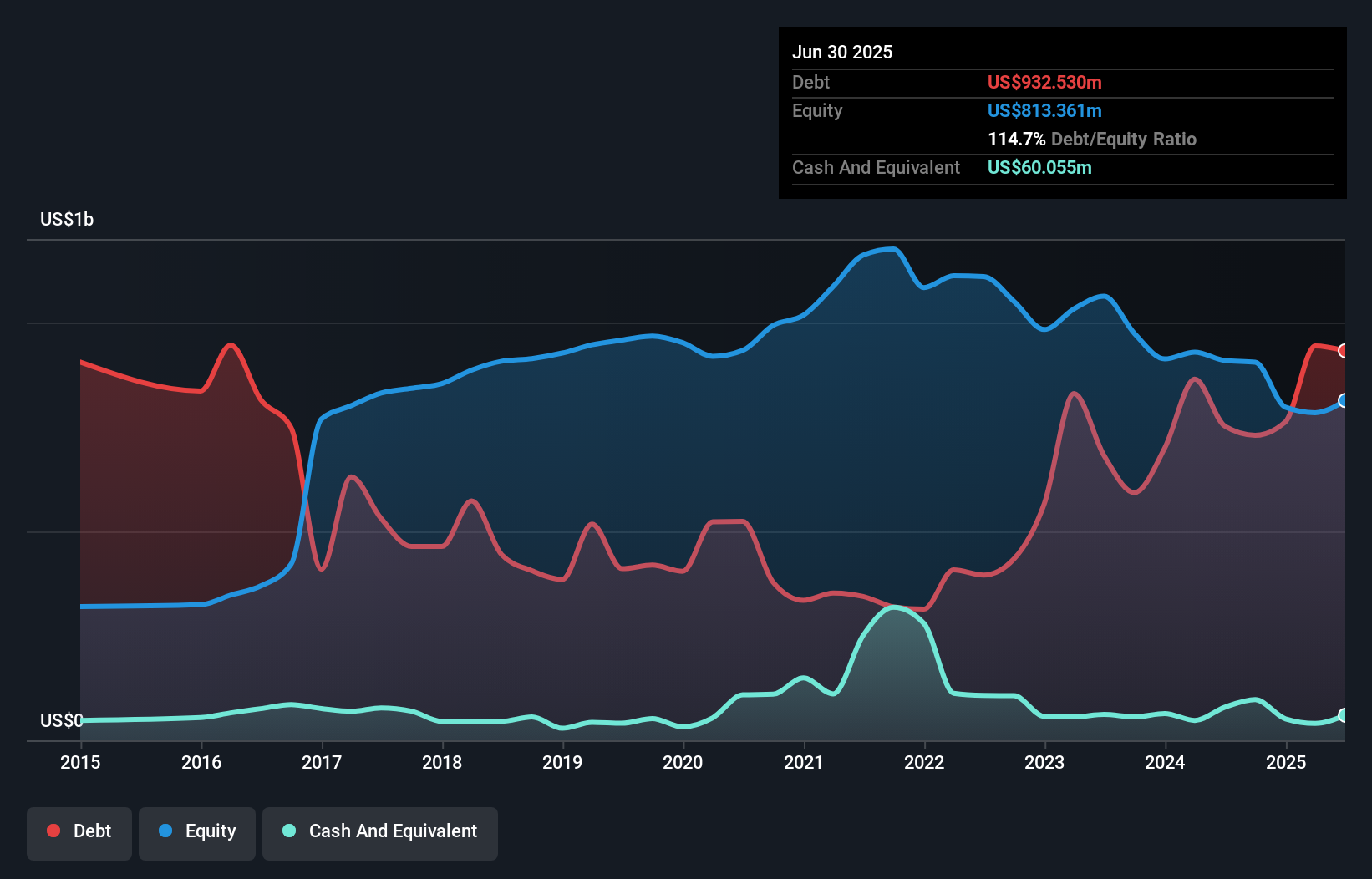Warren Buffett famously said, ‘Volatility is far from synonymous with risk.’ So it seems the smart money knows that debt – which is usually involved in bankruptcies – is a very important factor, when you assess how risky a company is. We note that Acushnet Holdings Corp. (NYSE:GOLF) does have debt on its balance sheet. But the real question is whether this debt is making the company risky.
Trump has pledged to “unleash” American oil and gas and these 15 US stocks have developments that are poised to benefit.
What Risk Does Debt Bring?
Debt assists a business until the business has trouble paying it off, either with new capital or with free cash flow. Part and parcel of capitalism is the process of ‘creative destruction’ where failed businesses are mercilessly liquidated by their bankers. However, a more common (but still painful) scenario is that it has to raise new equity capital at a low price, thus permanently diluting shareholders. Of course, debt can be an important tool in businesses, particularly capital heavy businesses. The first step when considering a company’s debt levels is to consider its cash and debt together.
How Much Debt Does Acushnet Holdings Carry?
You can click the graphic below for the historical numbers, but it shows that as of June 2025 Acushnet Holdings had US$932.5m of debt, an increase on US$752.0m, over one year. However, because it has a cash reserve of US$60.1m, its net debt is less, at about US$872.5m.
 NYSE:GOLF Debt to Equity History August 9th 2025 A Look At Acushnet Holdings’ Liabilities
NYSE:GOLF Debt to Equity History August 9th 2025 A Look At Acushnet Holdings’ Liabilities
According to the last reported balance sheet, Acushnet Holdings had liabilities of US$515.3m due within 12 months, and liabilities of US$1.07b due beyond 12 months. Offsetting these obligations, it had cash of US$60.1m as well as receivables valued at US$429.4m due within 12 months. So it has liabilities totalling US$1.09b more than its cash and near-term receivables, combined.
While this might seem like a lot, it is not so bad since Acushnet Holdings has a market capitalization of US$4.53b, and so it could probably strengthen its balance sheet by raising capital if it needed to. But we definitely want to keep our eyes open to indications that its debt is bringing too much risk.
Check out our latest analysis for Acushnet Holdings
We use two main ratios to inform us about debt levels relative to earnings. The first is net debt divided by earnings before interest, tax, depreciation, and amortization (EBITDA), while the second is how many times its earnings before interest and tax (EBIT) covers its interest expense (or its interest cover, for short). Thus we consider debt relative to earnings both with and without depreciation and amortization expenses.
Acushnet Holdings has a debt to EBITDA ratio of 2.5 and its EBIT covered its interest expense 5.5 times. This suggests that while the debt levels are significant, we’d stop short of calling them problematic. We saw Acushnet Holdings grow its EBIT by 6.7% in the last twelve months. Whilst that hardly knocks our socks off it is a positive when it comes to debt. The balance sheet is clearly the area to focus on when you are analysing debt. But ultimately the future profitability of the business will decide if Acushnet Holdings can strengthen its balance sheet over time. So if you want to see what the professionals think, you might find this free report on analyst profit forecasts to be interesting.
Finally, while the tax-man may adore accounting profits, lenders only accept cold hard cash. So we clearly need to look at whether that EBIT is leading to corresponding free cash flow. Looking at the most recent three years, Acushnet Holdings recorded free cash flow of 41% of its EBIT, which is weaker than we’d expect. That weak cash conversion makes it more difficult to handle indebtedness.
Our View
Acushnet Holdings’s EBIT growth rate was a real positive on this analysis, as was its interest cover. Having said that, its net debt to EBITDA somewhat sensitizes us to potential future risks to the balance sheet. Looking at all this data makes us feel a little cautious about Acushnet Holdings’s debt levels. While debt does have its upside in higher potential returns, we think shareholders should definitely consider how debt levels might make the stock more risky. When analysing debt levels, the balance sheet is the obvious place to start. However, not all investment risk resides within the balance sheet – far from it. For example Acushnet Holdings has 3 warning signs (and 2 which don’t sit too well with us) we think you should know about.
If, after all that, you’re more interested in a fast growing company with a rock-solid balance sheet, then check out our list of net cash growth stocks without delay.
New: Manage All Your Stock Portfolios in One Place
We’ve created the ultimate portfolio companion for stock investors, and it’s free.
• Connect an unlimited number of Portfolios and see your total in one currency
• Be alerted to new Warning Signs or Risks via email or mobile
• Track the Fair Value of your stocks
Try a Demo Portfolio for Free
Have feedback on this article? Concerned about the content? Get in touch with us directly. Alternatively, email editorial-team (at) simplywallst.com.
This article by Simply Wall St is general in nature. We provide commentary based on historical data and analyst forecasts only using an unbiased methodology and our articles are not intended to be financial advice. It does not constitute a recommendation to buy or sell any stock, and does not take account of your objectives, or your financial situation. We aim to bring you long-term focused analysis driven by fundamental data. Note that our analysis may not factor in the latest price-sensitive company announcements or qualitative material. Simply Wall St has no position in any stocks mentioned.







